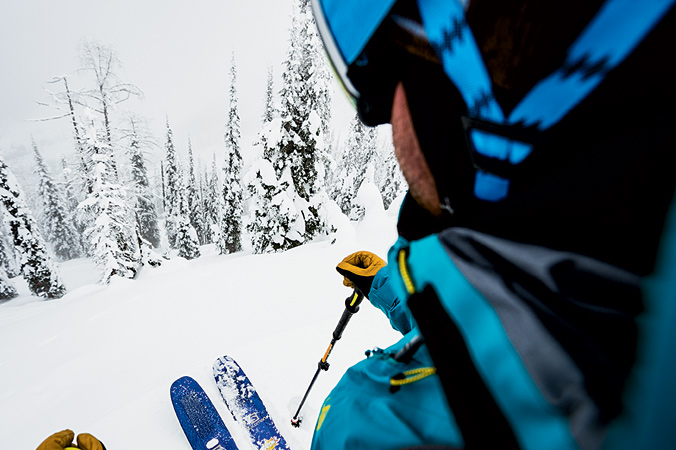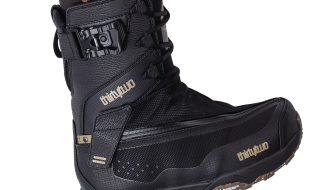Knowledge is power and, in the mountains, it leads to powder. But getting there and doing it safely takes time, practice and lessons both formal and not. And this year’s Skills Guide is a platform from which to dip a toe into the off piste, the impetus to dive headlong into a backcountry education or an opportunity to refresh and rethink personal processes. Because no matter your background, there’s always more to learn. And, just like traveling through the mountains, there’s pleasure in the pursuit.
—
Benjamin Franklin popularized the saying “God helps those who help themselves” in his 18th-century Poor Richard’s Almanack. And while Franklin’s country-dwelling character may not have been much of a backcountry traveler, his philosophy holds true today in the mountains: taking care of yourself and your gear leads to safer and more fun experiences.
Here’s how to dial your personal kit to earn more laps.

Chris Rubens dials in. | Whitewater, B.C. backcountry. | Photo: Mattias Fredriksson
Picture Your Person
An enjoyable day in the mountains starts with personal comfort, and that comfort starts from the underwear up. Know which of your layers work best for what temperatures and weather conditions, and dress accordingly in synthetics that move moisture and dry rapidly or in wool layers that are often more cozy and less stinky that non-natural fibers. Develop a layering system that’s cool, lightweight and breathable on the climb, warm and snow-proof on the descent and, at transitions, requires as little swapping of layers as possible. Vents help, as do puffy jackets and the right—albeit personal—combination of softshell and hardshell layers.
Pack It In
Sure, certain days require ski crampons while others might demand a third lunch. But dial in your pack’s regular contents to the point where the basics remain the same and are stored in the same places, both at home and when loaded up. That will equate to streamlined packing when you call in sick at the last minute or when searching for your multitool in the field. Further simplify your checklists by remembering necessities in groupings of three. Beacon, shovel, probe is the obvious trifecta, but there’s also helmet, goggles, gloves; skins, skis, poles; first-aid kit, repair kit, headlamp. Start the day off smoothly, too, by arriving at the trailhead with your skins already on.
Drink Up, Buttercup
While endurance athletes’ references to “fuel” make sports seem like mechanical, joyless pursuits, the underlying principle makes sense—bodies demand food and water to function at a high level. And, in cold environments, often at altitude, they need lots of both to stay warm, to keep moving and to promote rational cognition. Proper nutrition and hydration are highly individualized, but, in general, “more” and “often” are good rules to follow. Bring along calorie-rich foods that are easy and enjoyable to consume on the fly and flavored and/or warm drinks to promote hydration, even when it’s not hot and dry out.
Know Thy Self
When it comes to backcountry safety, any learned tools or skills must be coupled with an introspective understanding of risks and consequences—in other words, what is personally acceptable, what isn’t and under what circumstances. Is getting caught out after dark within your level of comfort? How about tweaking a knee if pushed around by a moderate-sized sluff? Know the day’s anticipated challenges and objective hazards and how they align with your personal levels of endurance, stamina and acceptable risk. Confidently contribute to group decisions, asking questions of others and speaking up if a decision aims to move beyond your comfort level.











Related posts:
Beyond the Gates: How the BRASS Foundation is teaching racers avy safety
Earn Your Interns
Mountain Skills: Phone Frenzy
Mountain Skills: Looking beyond instability